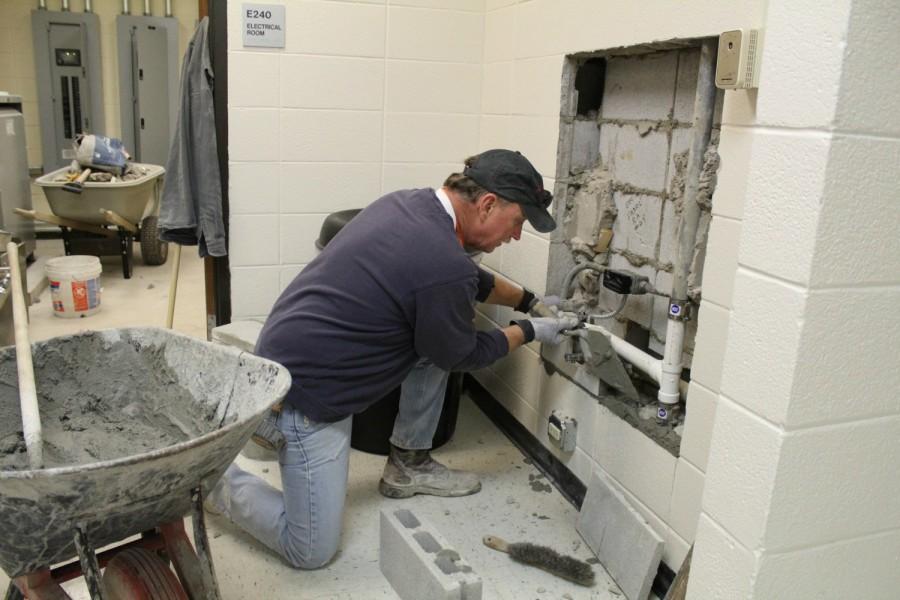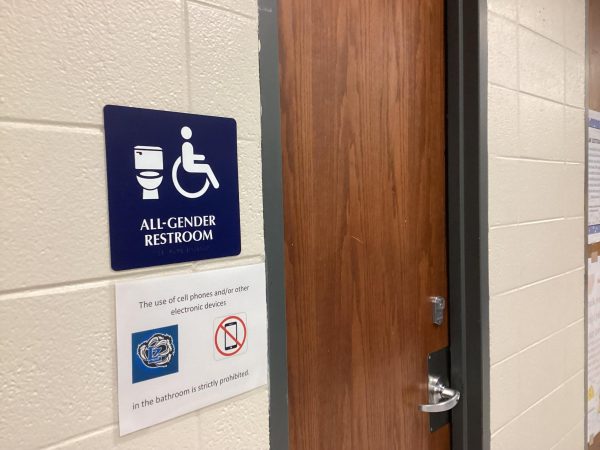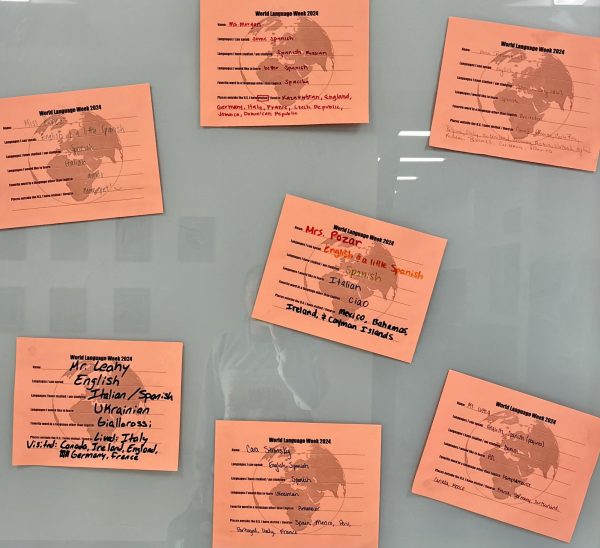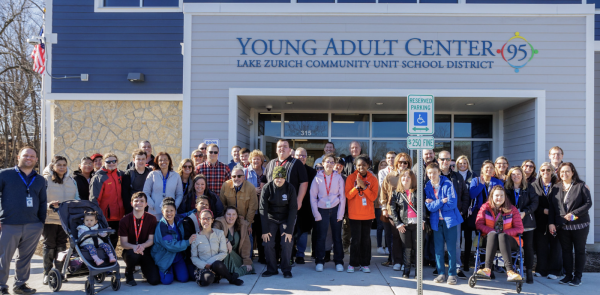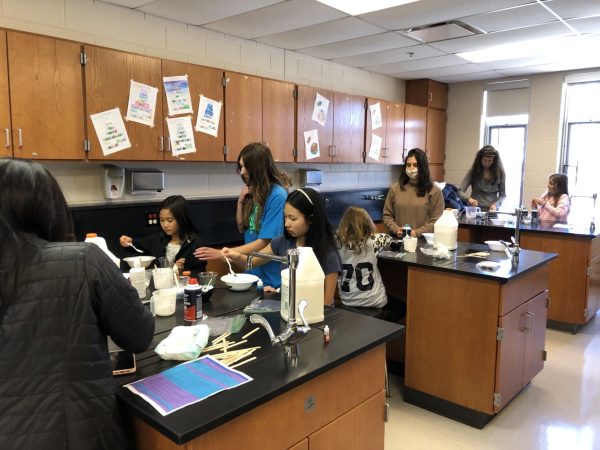28 times the legal limit: lead found in water fountain at school
Photo by Rachel Bauer
A mason lays the stone which will go behind one of the new watering stations. The school is replacing about a half dozen water fountains with watering stations to make sure lead doesn’t build up from infrequent use and keep other fountains safe.
The school has been installing new water fountains around the school, but the reason behind it has been shrouded in rumor.
“There have been rumors out there, and I have heard the rumors about the water being filled with lead. The district has a very comprehensive air quality plan that includes periodic testing of various environmental conditions, one of them being our water,” Ryan Rubenstein, assistant principal for student activities and facilities, said. “[But] it has always been a part of our plans to replace water fountains. Over the course of around three years we have been replacing water fountains with some of the new ‘watering stations’ where you can refill your water bottles.”
Replacing the water fountains with watering stations has been going on for years. However the push to replace about a half dozen fountains only came after a school-wide water test that tested 24 water sources around the building. Only one fountain failed the water test, coming back 28 times the safe limit of lead, according to Eileen Maloney, District 95 board member.
“With the recent sampling of water at our school about a week ago, Lyle Erstad, director of facilities, noticed some cloudy water coming out of one of the water fountains on the second floor,” Rubenstein said.“The fountain was flushed and taken out of service, and the water was sent out for testing. It came back with a high level of lead and slightly elevated levels of copper. According to the testing facility, this is more than likely due to non-usage of the fountain. That is why we are replacing it.”
According to Maloney, the problem would not have been solved without push for water testing around our district. The testing not only found unsafe levels of lead in a fountain at the high school, but also in a fountain at May Whitney, according to Maloney.
“Nobody is testing water right now; District 95 stands alone in the proactive nature of address this issue,” Maloney said. “That has a lot to do with our indoor air quality committee making suggestions and getting the water testing going.”
The school is currently in the process of replacing water fountains similar to the one which had the lead problem, according to Maloney.
“We are replacing right now all of the fountains upstairs, and a few others downstairs,” Rubenstein said. “Some of them will be the traditional water fountains, but others will be the new ‘watering stations’ where you can fill your water bottles up with filtered water.”

The Incredible Jim has been in the journalism program for 4 years and is in his second year on staff. Jim plays guitar and plays for the varsity tennis...

